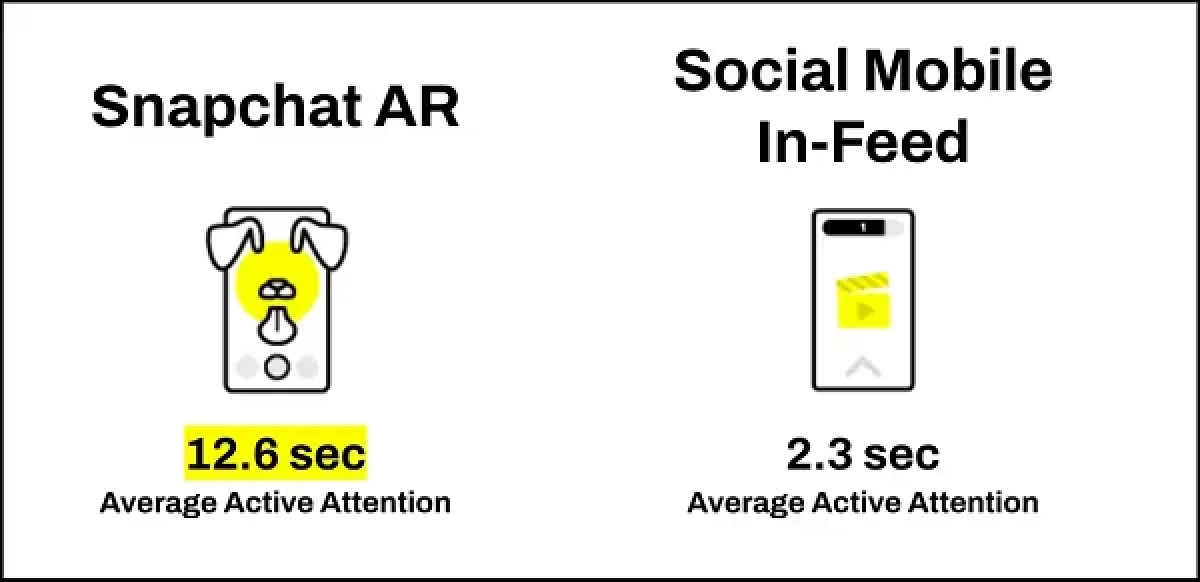Augmented reality activations can significantly boost attention, and with simplified A.R. creation, more brands now have the opportunity to tap into A.R. to maximize their brand messaging.
But just how much can A.R. enhance your promotions, and drive more consumer engagement?
That’s what Snapchat sought to find out with its latest study, working with Omnicom Media Group and Amplified Intelligence to test the capacity of A.R. to enhance attention, and drive better campaign outcomes.
And the results show that using A.R., in combination with regular ad campaigns, can have a big impact.

As you can see in this graphic, Snap’s main finding is that with A.R. elements in the mix, Snapchat drives 5x more active attention compared to industry peers.
Of course, there’s more to consider within this. The quality of the A.R. experience is one thing, as well as the cost and capacity to create enhanced digital projects. But the data shows that users do spend more time with A.R., which enhances branding and recall with promotions.
And that also translates into substantial lifts in both short-term brand choice and long-term brand loyalty.

The data also shows that A.R. contributes incremental gains in brand lift throughout the advertising funnel.

So it’s not just one element that’s impacted by an effective A.R. experience, it can also enhance all aspects of your branding efforts, which could be a valuable consideration within your marketing mix.
Though again, the quality of the specific A.R. experience is also important. Creating a generic Lens won’t hold the same resonance, but a dedicated, branded overlay can have significant impact.
And Snap says that all of its A.R. offerings do help to maximize attention.
“When breaking down performance by lens type, all drove high active attention and contributed positively to both short-term and long-term brand lift, confirming the versatile impact of AR across different marketing objectives. For example, Face Lenses performed best for both short/long-term lift because it puts the consumer at the center of action and creates shareable moments, while shoppable Lenses performed well for short-term lift because it also puts consumers at the center of the shopping action.”
It’s not necessarily easy to create an effective A.R. Lens, but as noted, Snap is always looking to simplify this, via enhanced tools within its Lens Studio that provide more assistance in putting together digital overlays.
And with generative A.I., that could get a lot easier again, with systems that will eventually be able to create unique Lens experiences based on text prompts.
Again, this won’t necessarily produce perfect, foolproof results, and working with a Lens expert is the best way to go to build the most effective A.R. experience.
But it could be another element to consider, especially as A.R. becomes a bigger focus through new wearables and other devices.
You can read Snapchat’s full A.R. in advertising study here.



